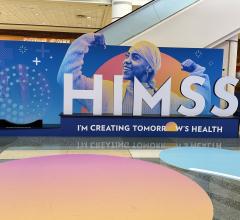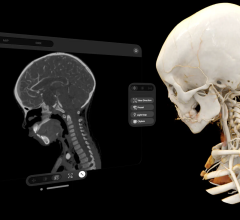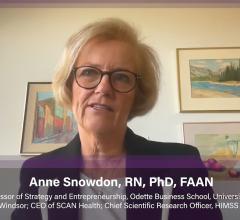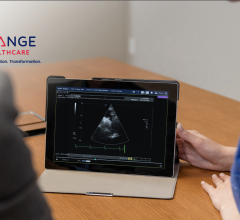
Although the requirements for Stage 2 payments for meaningful use are not yet final, there is information to understand the challenges that organizations will face. In Stage 1, organizations could defer about half of the optional requirements; organizations were most likely to defer requirements related to patient engagement and coordinating care.
We conducted a survey of information system leaders in provider organizations, which indicates that the organization's readiness to use these capabilities was the most common reason for deferring requirements. The readiness of their IT vendor was also an important factor.
Stage 2: Where are You?
Initial requirements for Stage 2 were expected to be released by the Centers for Medicare and Medicaid Services (CMS) at the end of December 2011 and are not out yet. Once they are out, there will be a comment period and then a final rule will be published. The final rule is expected in July 2012 but that date could move because of the delay in the releasing the draft. However, two important clues to the final rules and the challenges they will present are available.
Recommendations from the health information technology (HIT) Policy Committee were sent to the Secretary of Health and Human Services in June of 2011. During the process for Stage 1, few changes were made to the Policy Committee’s recommended requirements themselves — the major change was to make some requirements optional (the menu requirements). So far it appears that all of these optional requirements will become core requirements in Stage 2. CMS has released information on what menu requirements have been selected vs. deferred by the early adopters that have already attested for Stage 1. Since these early attesters are likely to be ahead of their peers in terms of electronic health record (EHR) use, menu requirements they chose to defer likely indicate what will be challenging for others.
To supplement the information from early attesters, we recently surveyed CIOs who are members of the College of Healthcare Information Management Executives (CHIME) to solicit information on why certain Stage 1 requirements were being deferred and what they see as challenges in the proposed new Stage 2 requirements.
What Can We Learn From Early Attesters?
HITECH is viewed as a “real” program. By Dec. 31, 2011, 3,077 hospitals and 172,972 eligible providers (EPs) had registered for incentives. This represents 61 percent of eligible hospitals and 33 percent of EPs. Since providers only need register when they are ready to attest to receive payments, many more are assumed to plan to take advantage of the program in the future.
Payment dollars based on Stage 1 of meaningful use are flowing as well: 604 hospitals have received Medicare payments and 1,016 have received Medicaid payments (some hospitals have received both). More than 29,000 EPs have received either Medicare or Medicaid payments (EPs can only qualify for one program). Through December 2011, more than $2.5 billion in payments had been made.
Where Are The Challenges With Stage 1?
In Stage 1, hospitals and EPs had core (required) requirements and menu (optional) requirements from which the organization needed to meet defined thresholds of use for a minimum number and could defer the rest. In Stage 2, it is likely that all items will be required. For some requirements, users could request an exemption if the requirement was not applicable to their practice. These requirements will likely be challenging for providers when they are required in Stage 2.
Organizations had to choose at least one public health reporting measure and were exempt if no public health agencies were able to accept electronic public health information. Therefore, the low rate of attestation to public health measures is understandable. All of the other measures for which less than 50 percent of organizations attested to meaningful use were related to improving care coordination and engaging patients and families in their care. Care coordination and patient engagement are exactly what will be required to meet the requirements of accountable care.
Why Are Organizations Not Selecting to Meet Stage 1 Requirements?
Because of the importance of achieving patent engagement and coordinating care to improve quality and safety and reduce costs, we conducted a survey of IT leaders to find out the reasons these requirements were being deferred. The survey was conducted through CHIME, and responses were received from 80 organizations. Sixty percent of the respondents represented individual hospitals, 34 percent were multi-hospital systems and 28 percent represented groups of EPs. (Some responded for both hospitals and groups of EPs.) In total, efforts on behalf of more than 100 hospitals and more than 550 EPs were represented in the survey. Note that the survey did not include any independent small physician practices.
Hospital respondents reported being well on their way to meeting Stage 1 requirements for meaningful use:
• 25 percent had already attested for Medicare payments
• 52 percent planned to attest in 2012
• All had plans to attest by 2013
For Medicaid (for which first-year requirements are much less stringent), 38 percent had already attested, 40 percent planned to attest in 2012 and the remainder planned to attest in 2013.
When asked why they planned to defer menu requirements, one-half of those who responded cited internal operational readiness or process challenges; another 38 percent cited vendor product readiness. Only one or two respondents cited costs or the fact that the capability was not an organizational priority as a reason for deferring.
The requirements that were most likely to be deferred by the hospital respondents were medication reconciliation, providing a summary-of-care record at transitions in care and providing patient educational materials. Reporting of clinical quality measures is a core requirement in Stage 1 and the requirements will expand in Stage 2. Physician documentation is the source of much of the documentation needed for Stage 1 quality reporting. [1] The biggest challenge reported by hospitals was capturing needed data from physician documentation electronically. Thirty-eight percent rated this as “hard” (requiring major process or capability changes) and 47 percent as “moderately difficult” (requiring moderate changes in processes or capabilities). In contrast, capturing data via electronic nursing documentation was rated as easy by 40 percent, moderately challenging by 53 percent and hard by only 4 percent. Data analysis for quality reporting was rated as moderately challenging by about 55 percent and hard by 24 percent of the hospital respondents.
As a group, IT executives responding to our survey on behalf of EPs reported being behind hospitals in meeting Stage 1 requirements for meaningful use. Only about 10 percent had met Medicare requirements in 2011 although 55 percent planned to meet them in 2012. Almost all of the remainder plan to attest in 2013; two physician groups were not planning to meet meaningful use requirements. More organizations representing EPs had attested to Medicaid incentive criteria (as noted previously, much less stringent); 29 percent had attested in 2011, 36 percent more were planning to attest in 2012, with all but three of the remainder planning to attest in 2013.
Medication reconciliation and providing patients timely access to electronic health information were the most likely (non-public health) requirements deferred by EPs, but providing summary records at transitions in care and providing reminders for preventive care were also high on the list of requirements being deferred. This pattern of deferrals matches those of early attesters reported by CMS. As with hospitals, the main reason for deferring requirements was operational readiness/process challenges, cited by 51 percent of respondents; 33 percent reported deferring because of vendor product readiness.
Quality reporting will also be a continuing challenge for EPs though fewer organizations rated capturing needed data from physician documentation electronically as hard — 26 percent of EPs (vs. 38 percent of hospital respondents) — or needing moderate changes in processes or capabilities (37 percent). Twenty-eight percent reported that they were prepared to capture physician documentation electronically. We believe that the difference can be attributed to the presence in most market-leading ambulatory EHRs of a feature that tracks guideline compliance and encourages capture of clarifying information needed for quality measure reporting.[2]
Capturing laboratory test information was rated as easy by 83 percent of organizations, moderately challenging by 22 percent and hard by only 6 percent. The data analysis was rated as moderately challenging by about 58 percent and hard by 18 percent of the IT executives who responded on behalf of eligible providers in our survey.
The Biggest Challenges in Achieving Meaningful Use for Stage 2
Stage 1 accepts partial implementation of many required capabilities and sets a fairly low bar on how much use qualifies as meaningful use. The data from CMS on all hospitals and eligible providers that attested to Stage 1 of meaningful use in 2011 reveals that most organizations exceeded these minimum thresholds for the requirements they met. For instance, hospitals and EPs used computerized order entry (CPOE) for medication orders for 85 percent of patients — even though the Stage 1 threshold was 30 percent of patients — and the organizations reported capturing more than 90 percent of laboratory results as structured data vs. a threshold of 40 percent. Clearly, once organizations adopt a capability, they use it for almost all patients — in part because maintaining two separate processes is difficult and could result in safety issues.
In our survey, 57 percent of respondents thought the likely increase in the threshold for CPOE medication orders from 30 to 60 percent of patients would not be difficult and only 16 percent thought it would be hard. Most are also prepared to use CPOE medication orders. The proposed Stage 2 requirement to use CPOE for laboratory orders was also not seen as a major challenge — 63 percent reported they were prepared, 22 percent expected moderate changes in processes or systems, and only 13 percent expected major changes A proposed new requirement for hospitals in Stage 2 is to have electronic medication administration (eMar) in at least one unit. Eighty-six percent of our survey respondents say they are prepared to meet the eMar requirement, with only 3 percent saying it will be hard. The results are mixed on the proposed Stage 2 requirement for electronic physician notes; 25 percent report they are prepared, 40 percent say that moderate changes will be needed and 34 percent report that major changes will be required.
The challenges with capabilities to engage patients and coordinate care will remain in Stage 2 — and all indications are that they will be required. Only 12 percent of our survey respondents were prepared to allow patients to view and download their information at the time of the survey, and only 24 percent were prepared to transmit summary-of-care records at transitions in care. As noted earlier, hospitals and EPs report challenges with both vendor products and operational readiness.
Recommendations for Stage 2
Stage 2 is coming soon and a full year of operational use of capabilities will be required (rather than the three months for Stage 1). Waiting until the final rule is issued to start moving is simply not an option.
Based on the results from initial organizations that attested to meaningful use and the results of our survey, the challenges are clear. Now is the time for organizations to work in earnest to build capabilities to engage patients, coordinate care and electronically report on quality. The importance of these requirements goes beyond meeting the incentives for meaningful use. Patient engagement will be essential to enable patients to share accountability for their care and achieve better health outcomes. Sharing information among providers is the essential requirement for being accountable for care and the health of a population. The requirements for quality reporting are increasing at the same time as more reimbursement is tied to performance. Delivering the best care every day to every patient will require managing quality and quality reporting in real time so that gaps in care can be avoided, rather than merely reported.
Three essential areas where organizations need to start now are:
1. Providing patients with access to their health information electronically through patient portals or directly from EHR systems
2. Electronic capture of physician notes, including diagnosis and treatment, plus rationale for excluding patients from treatment recommendations
3. Exchange of patient information at transitions in care
Equipping new processes in these areas with the HIT that makes them possible is not just the path to capturing Stage 2 meaningful use payments, but also to “winning” under the new Medicare payment rules and becoming accountable for the care of a population.
The data on numbers of organizations attesting to meaningful use were accessed here: www.cms.gov/EHRIncentivePrograms/Downloads/Monthly_Payment_Registration_Report_Updated.pdf
Editor's note: This paper was authored by Erica Drazen, managing director, and Jane Metzer of CSC’s Global Institute for Emerging Healthcare Practices, the research arm of CSC’s Healthcare Group. The authors would like to thank James D’Itri, and Diane Conrath from CSC’s Healthcare Delivery Practice for their assistance in creating the CIO survey and to CHIME members for participating in the survey.
If you’d like to comment or start a discussion on this topic, join CSC’s Meaningful Use Community — ask CSC and other community members for their advice and opinions, view documents, connect with other members, share your experiences and best practices, and find links to additional resources at https://community.csc.com/community/meaningful_use
References:
1. Metzger, et al. "Physician Quality Reporting: The Hidden Requirements of Meaningful Use." CSC, January 2011. www.csc.com/health_services/insights/58405-physician_quality_reporting_the_hidden_requirements_of_meaningful_use
2. Metzger, et al. "Hospital Quality Reporting: The Hidden Requirements in Meaningful Use." CSC, August 2010. www.csc.com/health_services/insights/51442-hospital_quality_reporting_the_hidden_requirements_in_meaningful_use.


 May 01, 2024
May 01, 2024 









